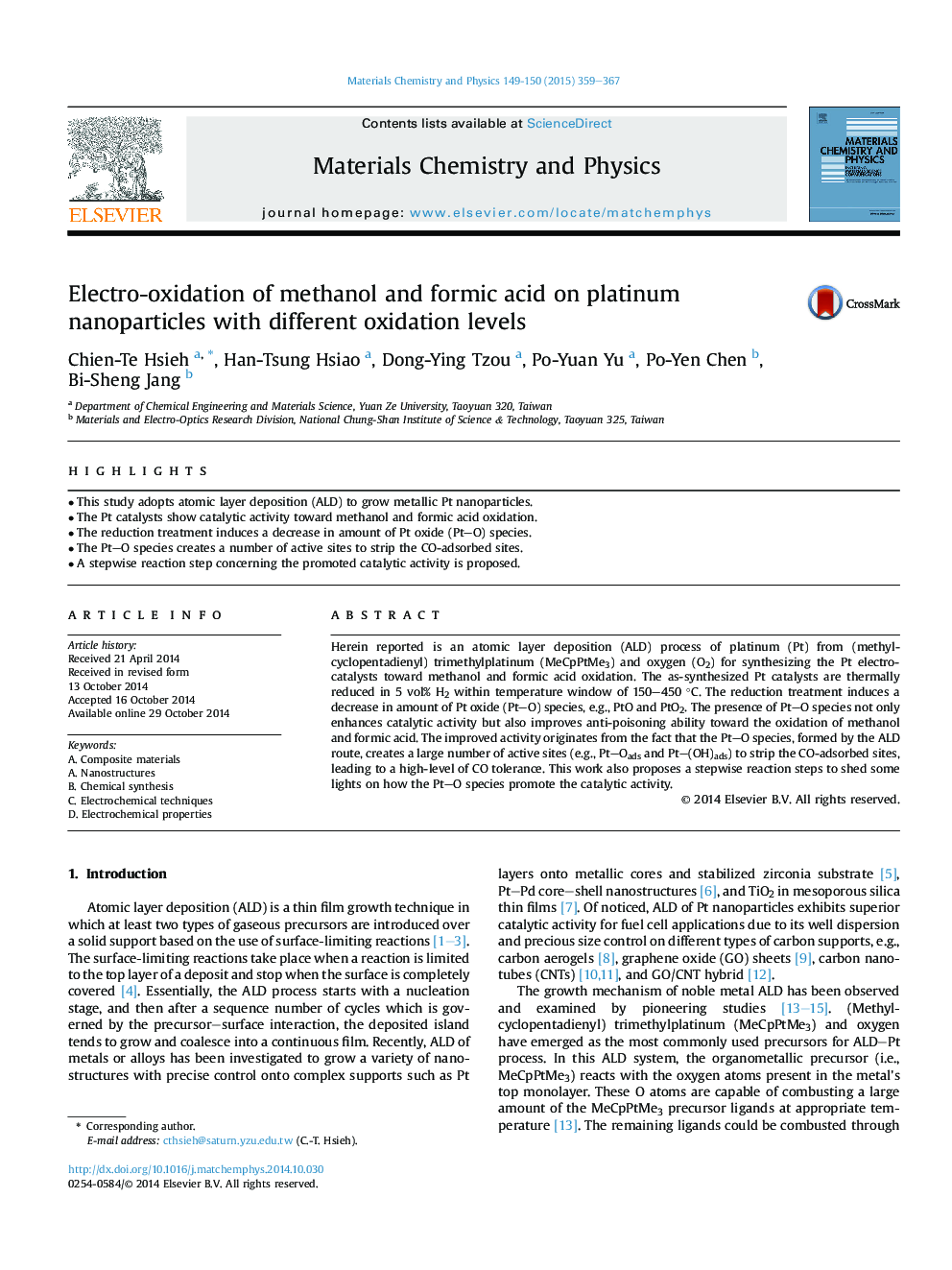| Article ID | Journal | Published Year | Pages | File Type |
|---|---|---|---|---|
| 1521427 | Materials Chemistry and Physics | 2015 | 9 Pages |
•This study adopts atomic layer deposition (ALD) to grow metallic Pt nanoparticles.•The Pt catalysts show catalytic activity toward methanol and formic acid oxidation.•The reduction treatment induces a decrease in amount of Pt oxide (Pt–O) species.•The Pt–O species creates a number of active sites to strip the CO-adsorbed sites.•A stepwise reaction step concerning the promoted catalytic activity is proposed.
Herein reported is an atomic layer deposition (ALD) process of platinum (Pt) from (methylcyclopentadienyl) trimethylplatinum (MeCpPtMe3) and oxygen (O2) for synthesizing the Pt electrocatalysts toward methanol and formic acid oxidation. The as-synthesized Pt catalysts are thermally reduced in 5 vol% H2 within temperature window of 150–450 °C. The reduction treatment induces a decrease in amount of Pt oxide (Pt–O) species, e.g., PtO and PtO2. The presence of Pt–O species not only enhances catalytic activity but also improves anti-poisoning ability toward the oxidation of methanol and formic acid. The improved activity originates from the fact that the Pt–O species, formed by the ALD route, creates a large number of active sites (e.g., Pt–Oads and Pt–(OH)ads) to strip the CO-adsorbed sites, leading to a high-level of CO tolerance. This work also proposes a stepwise reaction steps to shed some lights on how the Pt–O species promote the catalytic activity.
